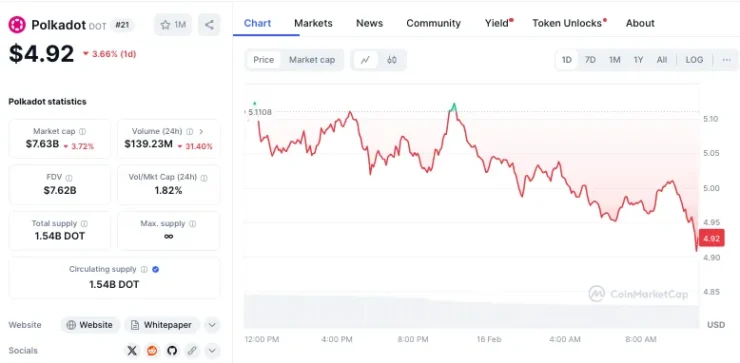Polkadot’s multi-chain architecture is positioning it as a formidable alternative to Ethereum in the NFT space. As Ethereum continues to grapple with scalability and high transaction fees, developers and collectors are turning to Polkadot, drawn by its lower costs, interoperability, and governance structure. With a growing ecosystem of NFT projects, Polkadot is emerging as a potential disruptor in the digital collectibles market.
Polkadot’s unique design allows developers to create custom blockchains, known as parachains, which offer specialized functionalities. Unlike Ethereum’s single-chain approach, Polkadot enables multiple blockchains to interconnect, reducing congestion and transaction costs. This scalability translates into fees as low as $0.01 to $0.03 per transaction—significantly cheaper than Ethereum’s average of $6.
Developers on Polkadot also benefit from Substrate, a framework that simplifies the process of building parachains. This ease of development has led to the emergence of several NFT-focused projects, each leveraging Polkadot’s interoperability to enhance user experience. Furthermore, Polkadot’s governance model ensures that NFT owners retain full control over their assets and profits, a factor that has made the platform increasingly attractive to artists and collectors alike.
Security is another defining feature. Polkadot’s Relay Chain provides a shared security model across all parachains, reducing vulnerabilities and ensuring robust protection for NFT transactions. This comprehensive approach sets it apart from Ethereum, where individual projects must implement their own security measures.
Leading NFT Projects on Polkadot

Several key projects have emerged within the Polkadot ecosystem, each addressing different aspects of the NFT marketplace.
KodaDot, often referred to as Polkadot’s central NFT marketplace, aggregates tokens from six different blockchains and supports nine NFT standards. It offers an intuitive user experience with an easy-to-use API, making it accessible to both new and experienced collectors. For creators, KodaDot’s mass minting feature streamlines the process of producing multiple NFTs simultaneously.
Basilisk, integrated into KodaDot, aims to resolve NFT liquidity challenges. Unlike traditional NFT platforms where transactions can be slow, Basilisk introduces royalty-free transactions and order book functionalities, allowing buyers to place pre-set purchase orders for specific NFTs. This approach accelerates trading and enhances market efficiency.
Astar Network, a Japan-based parachain, combines smart contract functionality with NFT compatibility. It has become a hub for anime and gaming-related NFTs, even attracting interest from industry giants like Square Enix. Astar’s dual support for Web Assembly (WASM) and Ethereum Virtual Machine (EVM) allows developers to implement innovative features, such as NFT refunds and in-game utility.
Unique Network takes NFT utility a step further by enabling the bundling of fungible and non-fungible tokens. It also introduces fractionalized ownership, allowing users to buy partial stakes in high-value NFTs—a feature uncommon in traditional marketplaces.
RMRK positions itself as a next-generation NFT platform by enabling multi-resource NFTs. These digital assets can contain multiple media types, change dynamically based on user interaction, and even include nested NFTs—features that push the boundaries of conventional NFTs.
As Polkadot’s NFT ecosystem expands, it presents a growing challenge to Ethereum’s dominance in the space. With lower fees, enhanced security, and increased interoperability, Polkadot is emerging as a viable alternative for collectors, artists, and developers seeking a more efficient and flexible blockchain for digital assets.





